IoT Registry • SCORE
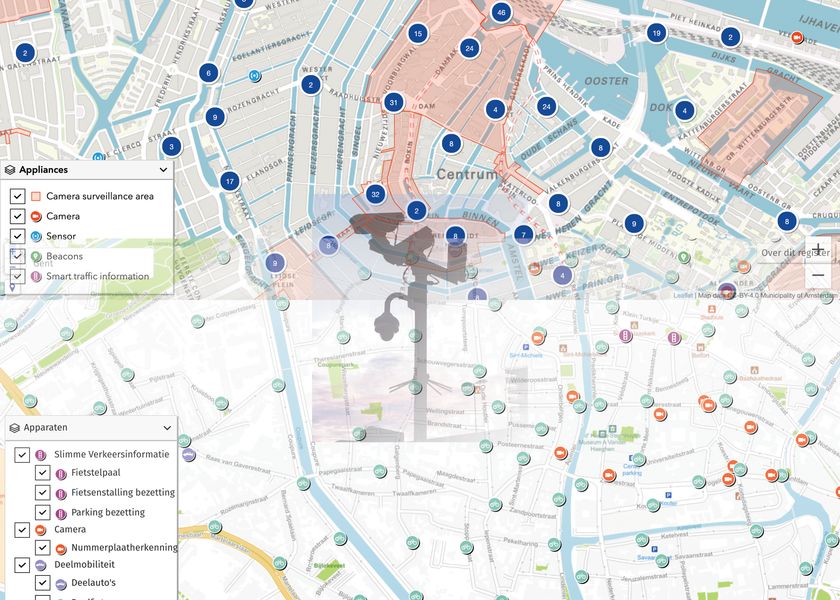
The IoT Registry offers transparency to citizens, visitors and entrepreneurs by providing an online registry of IoT devices.
The challenge
Many cities are seeing a rise of IoT (Internet of Things) devices appearing in the public domain. These devices are being installed at various places (streets, public spaces, squares, parks, river sides, bridges, buildings, etc.) for various purposes and by various parties (local government, companies, ...). Examples are smart cameras, beacons, intelligent street furniture, smart waste bins, charging poles, street lighting equipped with sensors, location trackers, crowd density counters, etc.
It tends to remain unclear for citizens, visitors and local companies what purpose an individual IoT device serves in the public space. When spotting a new "strange looking" device in the public domain in your local neighbourhood, it takes an expert to derive from merely how the device looks whether it is or is not a smart device, the purpose it serves, who owns it, whether it is or is not storing, processing, analysing, sending data, to which degree that data is personal data … The digital abilities it does (or does not) possess are in no way visible to the eye, some devices literally representing a "black box". Therefore the presence of smart and technologically advanced devices in local neighbourhoods raises worries and uncertainties, leading to negative feelings of insecurity and surveillance. This does not line up with the social benefits that IoT project leaders wish to achieve when improving public services cities.
Simple questions can remain unanswered, such as:
What is it?
Why does it need to be there? What public purpose does it serve?
Which data does it capture, who is responsible for processing it?
Who owns its data? How long is this data kept?
What kind of data does it process? Does it store or send personal data, visual data, video, images, algorithmic derived data, etc.
Could its data in fact be useful for me as a citizen, visitor, company or city service?
While GDPR already requires all cities to make available a public registry on personal data processing, such initiatives typically focus on (intangible, invisible) processes of handling the personal data rather than the (tangible, visible) individual devices found in public spaces.
The solution
The IoT Registry addresses this challenge and aims to offer more transparency to citizens, visitors and companies, by providing an online registry of as many IoT devices as possible.
It answers basic questions like: Why is the device here? Who installed it here? And who has access to the data? The application leads the citizen to information related to the device that is available on various communication channels of the city, the project that the devices belongs to, or its responsible owner.
The public registry visualizes metadata of IoT devices on a map. By clicking the different symbols on the map, the citizen is able to consult publicly known information about the IoT device.
Multiple cities
The first version of the IoT Registry was developed in Amsterdam. Citizens can explore cameras, camera areas, sensors, beacons and smart traffic information devices in Amsterdam at its website here.
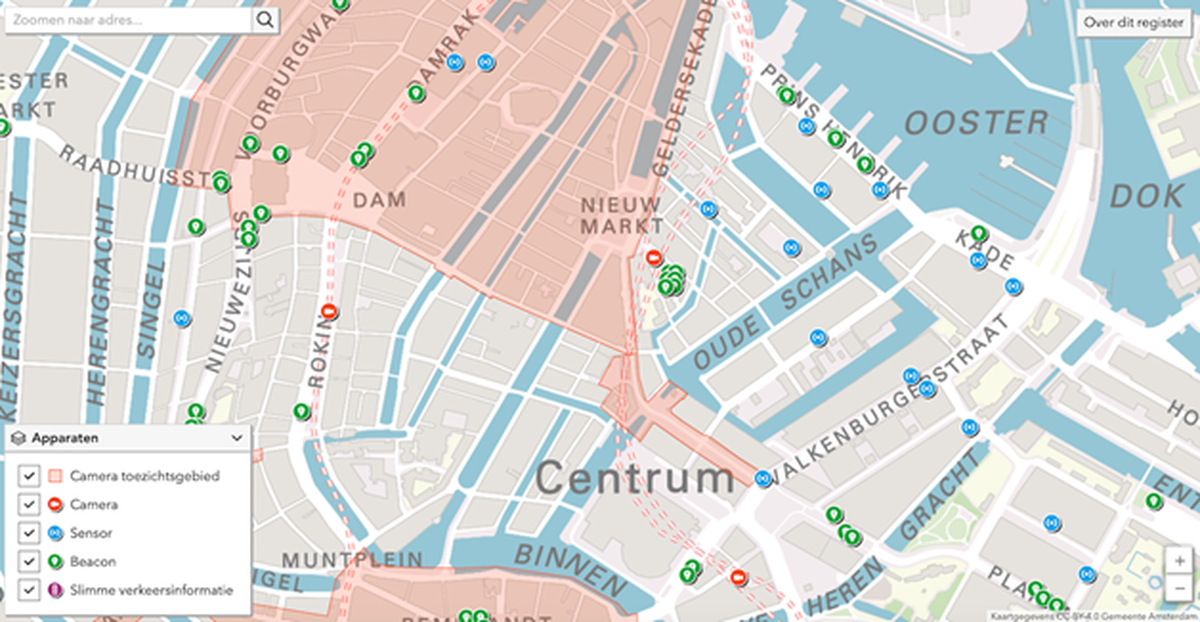
First IoT Registry by Amsterdam
After Amsterdam released the first version of the IoT Registry, the teams of Ghent and Aarhus started to co-develop the application as part of the SCORE (Smart Cities and Open data REuse) Interreg project.
As a co-developing team, they made available different common components for any city:
the concept was internationalised
a separate user-friendly module was introduced where the data sources visualised on the map can be managed, this module was made available in SCORE as a standalone component under the name APIAPI
a dynamic category, type and popup field system was introduced so that cities can better customize the concept to cluster and present their available data
and in general it was made more generic, extendible, reusable and future proof.
In parallel, the cities in this working group also started developing their own derived local version of the IoT Registry, in order to better align with specific needs of each city.
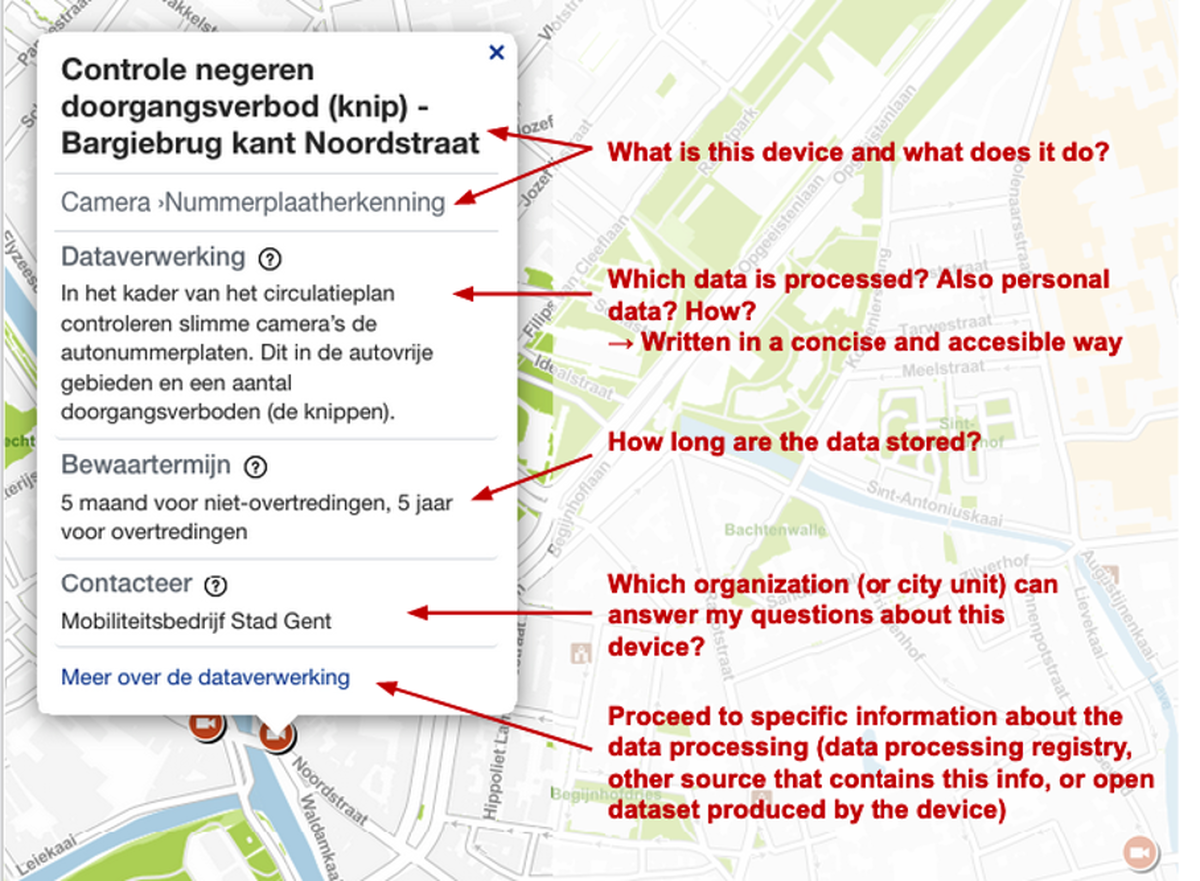
The second version of the IoT Registry is implemented in Ghent (see it here) as a transnational co-developed software application, at the same time the cities Aarhus and Hamburg are adopting the same concept in their cities.
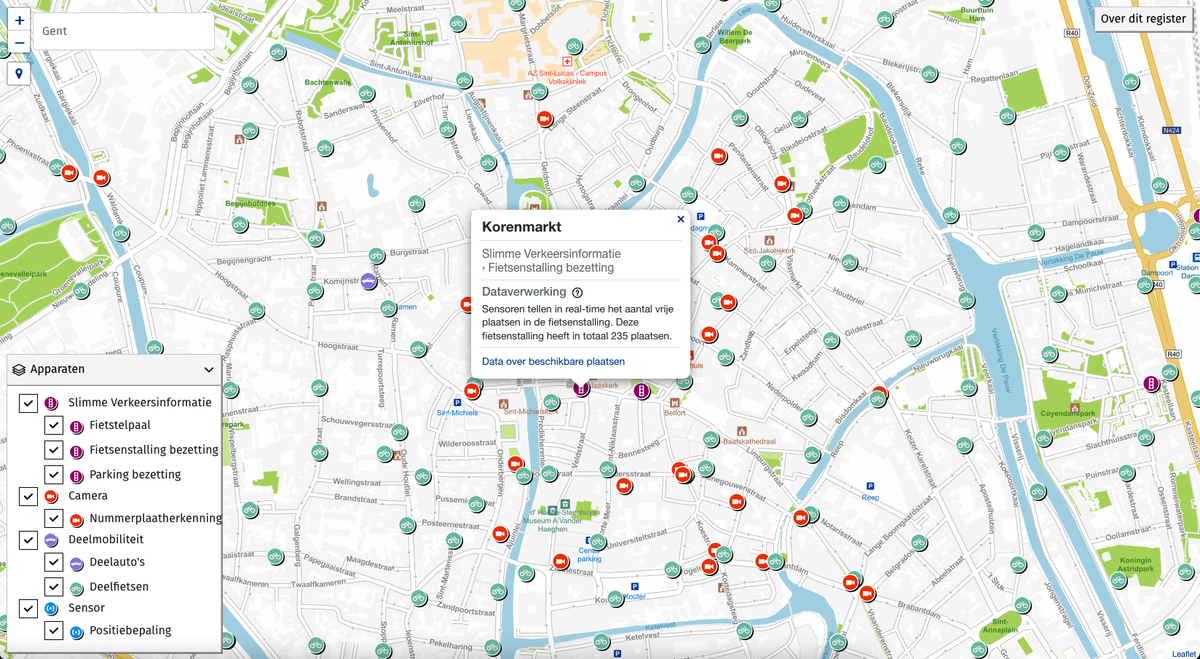
How does it work
As co-developing cities we provided the starting point for new cities that would like to introduce their own IoT Registry. The application was developed in such a way that every city can smoothly:
- Set up a first test in your city's (or your IT partner's) digital infrastructure
- Do a first customization of the data sources shown on the map (based on IoT devices for which you already have the data)
- Customize how the data is shown
- Demonstrate the prototype to local stakeholders
- Discuss and decide whether it makes sense to permanently roll out and support the IoT Registry in your city IT portfolio
To get started with the IoT Registry, a bit more in detail, you would:
- Set up the required technological environment for both the IoT Registry and the APIAPI building block. A software architect would know how, based on the Github repository.
- Prepare your digital inventory of the current data sources for IoT devices: collect and document which API's, realtime data and static data (CSV) are available (all these types of data streams are supported).
- Design how you would customize the popups for your city (inspired by Amsterdam and Ghent's approaches). Define the fields you are going to show in the marker popups, write clear information for description fields and define which links to more context you can provide for each (type of) device.
- Set up the APIAPI building block. Assign and train a team member to start managing all data sources, manage the marker popup content, etc.
- You will have to integrate your own address lookup service in the application so that citizens can use the search box of the tool to find a specific street or area in your city. Be aware that Amsterdam and Ghent have both integrated their own local address lookup services.
- Prepare to launch the IOT Registry. It is advised to set up a continuous process where the city's newest IoT or smart device related projects/sensors are spotted, and added to the application. The more your map reflects the reality of the city, the more it will be considered useful by its users.
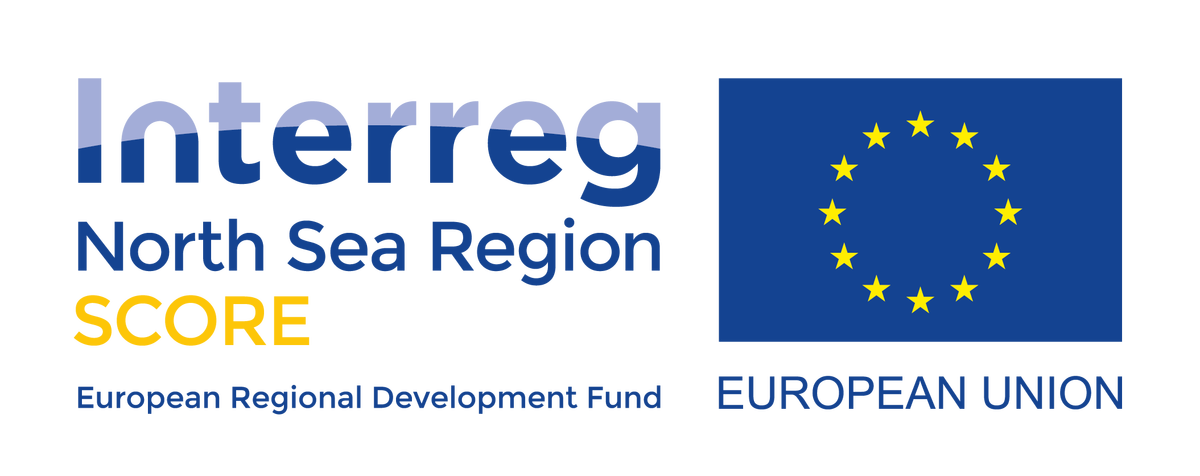
Your cookie preferences
We use cookies and similar methods to recognize visitors and remember their preferences. To learn more about these methods, including how to disable them, view our cookie policy.

